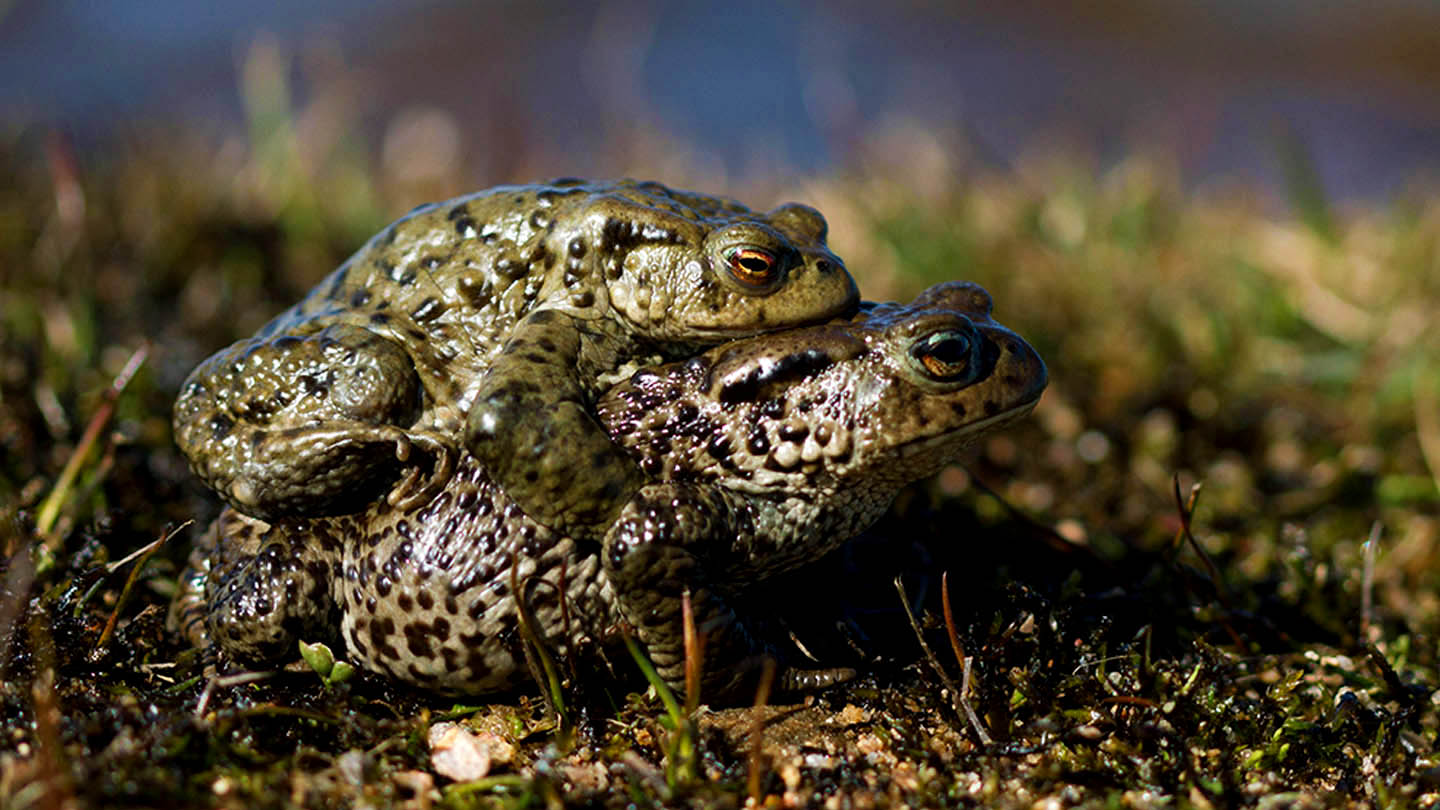Amphibians typically mate in aquatic environments. They often choose ponds, streams, or wetlands for reproduction.
Amphibians, a diverse group including frogs, toads, salamanders, and newts, are renowned for their dual life stages. Their unique life cycle starts with an aquatic larval stage and culminates in a terrestrial adult stage, where they continue to rely heavily on moist habitats.
Reproduction plays a critical role in the survival of amphibian species, and understanding where amphibians mate is essential for conservation efforts. These creatures are particularly meticulous about their breeding sites, which must have the right conditions for egg-laying and development.
Environmental cues such as temperature and rainfall signal the start of the mating season, leading to a fascinating array of breeding behaviors. The choice of mating location is crucial, as it directly impacts the survival rate of their offspring, making the conservation of these habitats important for their future.
Amphibian Reproduction
Amphibians choose special places for making families. They like wet places the best. Ponds, swamps, and even ditches can be perfect.
Their love dance is unique. Frogs sing, and salamanders dance. This tells others they are ready. They show off to find a mate.
Mating Rituals
Amphibian mating rituals are diverse and fascinating. Many species use vocalizations as a key strategy. Male frogs and toads often call to attract females. These calls vary greatly. They can be trills, croaks or chirps. Each species has a unique sound. This helps females find the right mate.
Choosing the right mating site is crucial for success. Amphibians usually select locations with ample moisture. Typical sites include ponds, streams, and wetlands. These environments ensure the survival of their offspring. The ideal mating site also offers protection from predators. It must be suitable for laying eggs.
Environmental Factors
Amphibians choose their mating time with great care. Temperature plays a key role in their mating habits. A specific range of warmth is needed for amphibians to breed. Not too hot and not too cold, the temperature must be just right. This perfect temperature helps in egg development and the growth of offspring.
The need for the right moisture levels is also critical. Without enough wetness, eggs can dry out and die. Amphibians often mate in wet environments. Places like ponds and wetlands are perfect. These spots give the right amount of moisture for egg survival. Both temperature and moisture are vital for amphibian mating success.

Credit: www.woodlandtrust.org.uk
Breeding Seasons
Amphibians often find mates during specific seasonal patterns. For many species, this happens as spring approaches.
Warmer temperatures and wet conditions are vital for this process. Frogs and salamanders usually breed in water. Toads might choose land near water.
Climate change is altering these patterns. Unpredictable weather can confuse amphibians. Some may breed too early or too late. This can hurt their babies’ survival.
Let’s look at a simple table showing how different species are affected:
| Species | Normal Breeding Season | Change Due to Climate |
|---|---|---|
| Common Frog | Early Spring | Earlier Breeding |
| Axolotl | Year-Round | Altered Patterns |
| Spotted Salamander | Late Winter | Delayed Breeding |
Egg-laying Process
Amphibians choose diverse environments for mating. Frogs often prefer watery areas to lay eggs. Protection is key for their offspring. Salamanders might choose moist soil, under logs, or leaves.
Some species create foam nests to safeguard eggs. Others, like the red-eyed tree frog, lay eggs on leaves over water. These methods keep eggs moist and protect them from predators.
| Amphibian | Nesting Site | Egg Protection Method |
|---|---|---|
| Frogs | Ponds, Lakes | Water, Foam Nests |
| Salamanders | Moist Soil, Under Logs | Hidden, Damp Locations |
| Red-eyed Tree Frog | Leaf over water | Eggs drop into water after hatching |

Credit: www.reddit.com
Parental Care
Amphibians show unique parental care strategies. These can vary widely among species. Frogs and salamanders are prime examples. During the incubation period, eggs are kept safe and at the right temperature.
Commonly, moms and dads guard the eggs against predators. Some species might lay eggs in moist areas. This helps to prevent the eggs from drying out. Others might carry eggs on their back to keep them safe.
Maternal care includes transporting eggs to suitable water bodies. Some moms will stay with their young until they can fend for themselves. This dedication ensures the best start for their offspring.
Credit: www.amazon.com
Frequently Asked Questions On Where Amphibians Mate
Where Do Amphibians Breed?
Amphibians typically breed in freshwater habitats such as ponds, swamps, and streams. They favor moist environments for egg laying and larval development.
How Do Amphibians Find A Mate?
Amphibians often find mates through vocal calls, primarily by males, to attract females. Visual displays and pheromones may also play roles. These methods ensure successful mating during the breeding season.
Where Does Fertilization Take Place In Amphibians?
Fertilization in amphibians typically occurs externally in water, where females release eggs and males release sperm simultaneously.
Do Amphibians Mate For Life?
Amphibians generally do not mate for life. Most engage in seasonal breeding and do not form long-term pair bonds.
Conclusion
Understanding the diverse breeding habits of amphibians reveals a captivating aspect of nature. Bodies of water often serve as nuptial spaces, from quiet ponds to flowing streams. It’s essential for the survival of these species, reflecting the delicate balance of ecosystems.
Protecting these habitats secures the future for amphibians and biodiversity alike. Let’s cherish and preserve these natural arenas of amphibian life.
